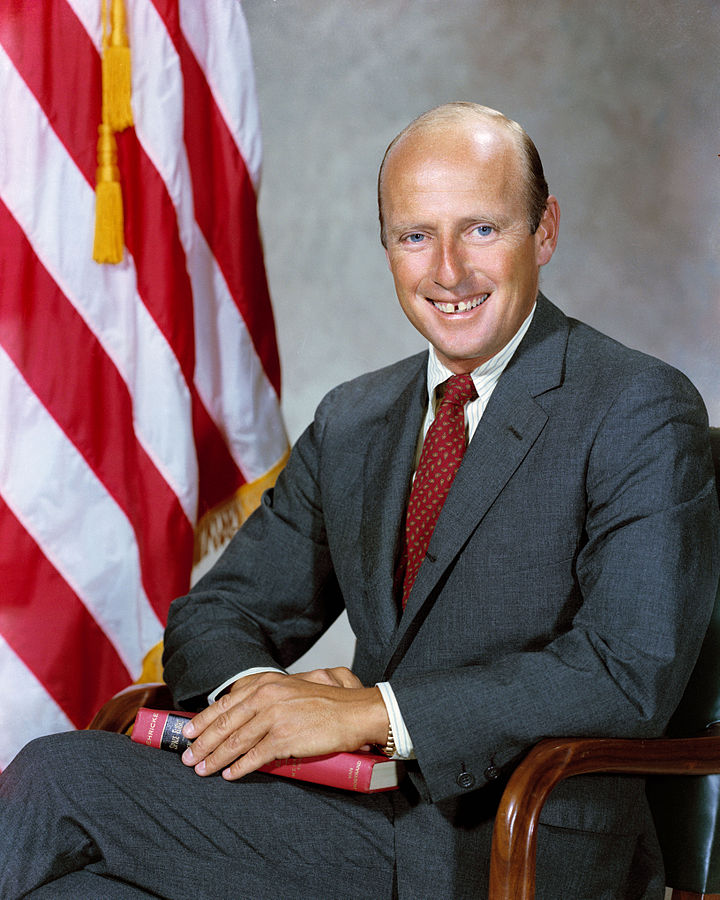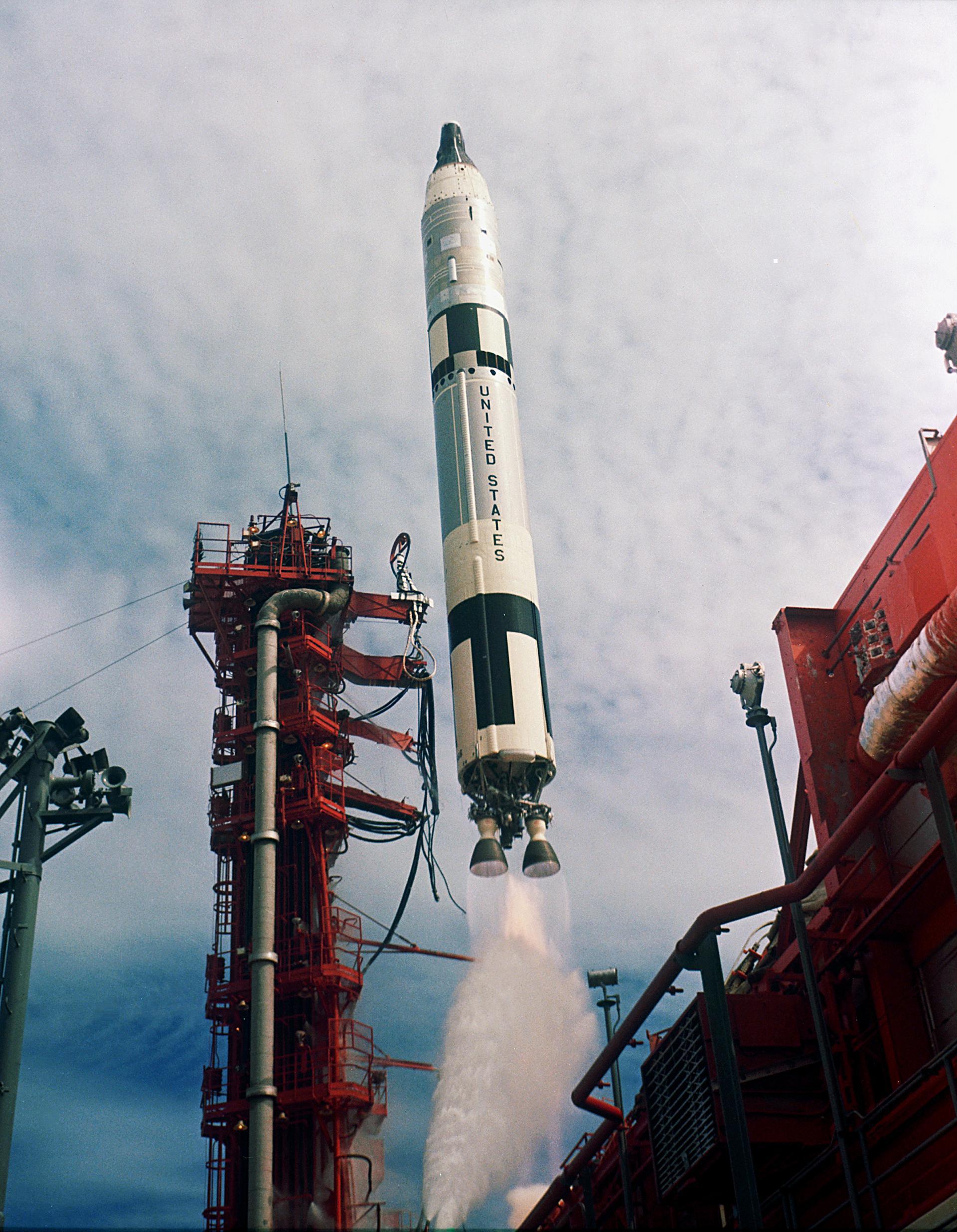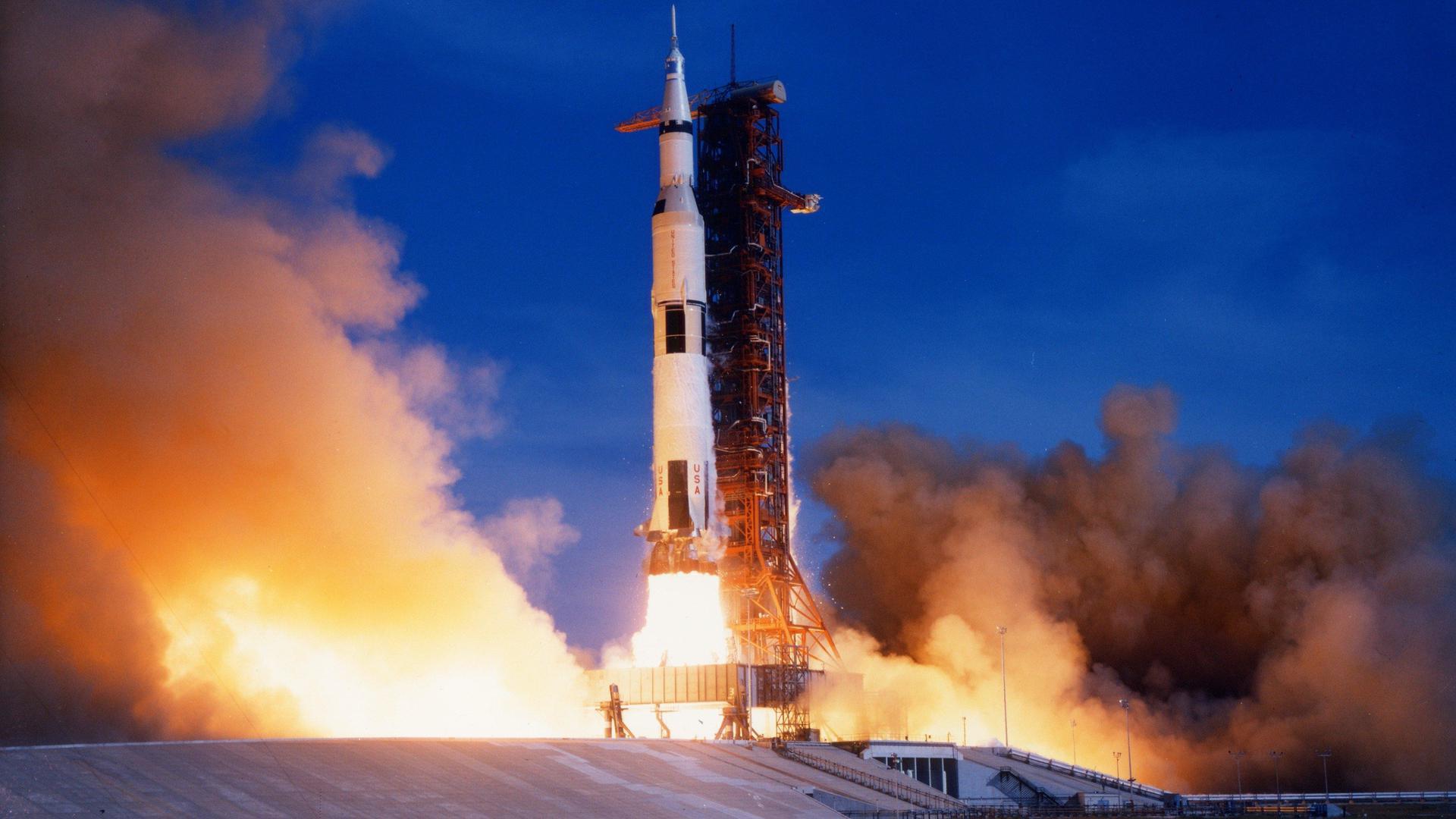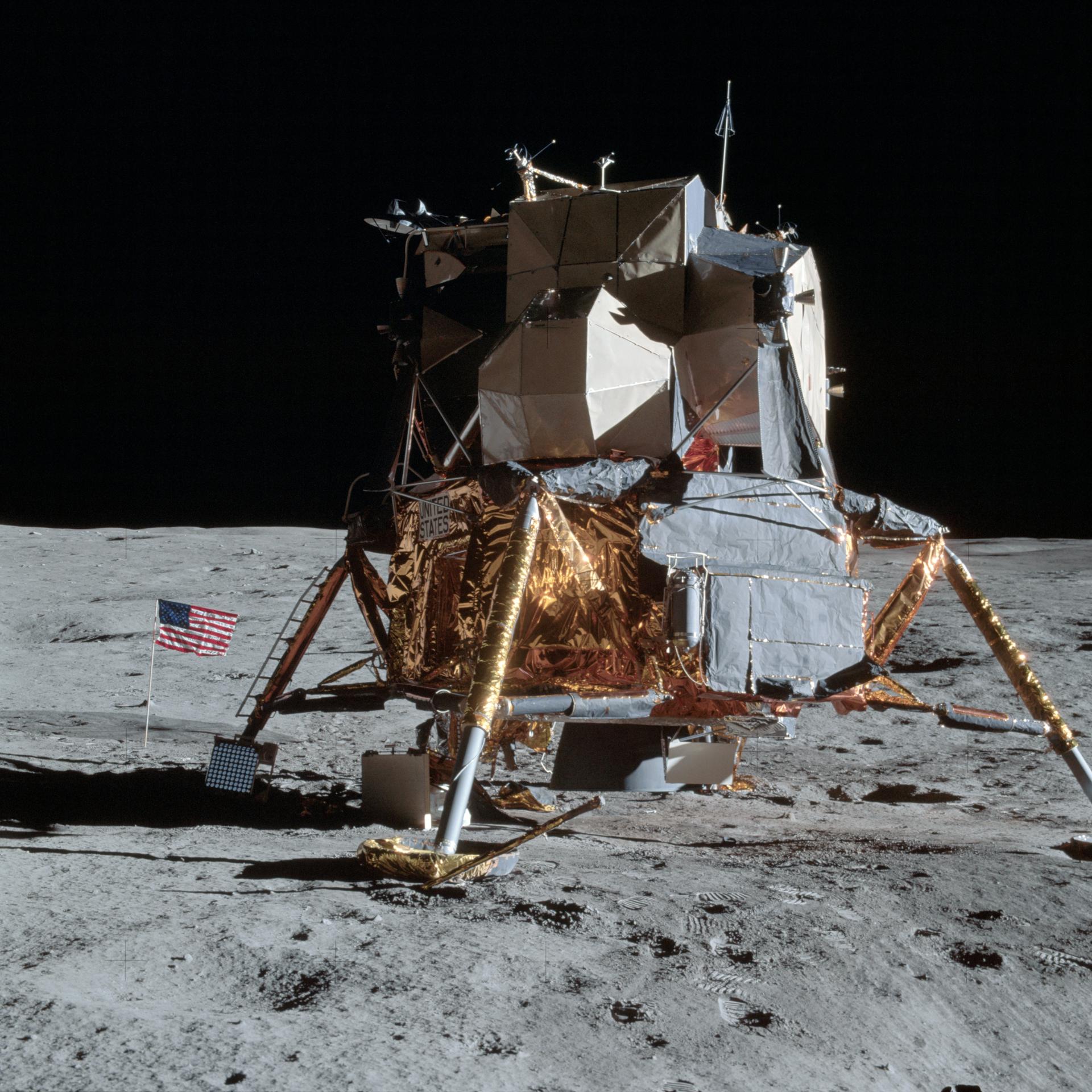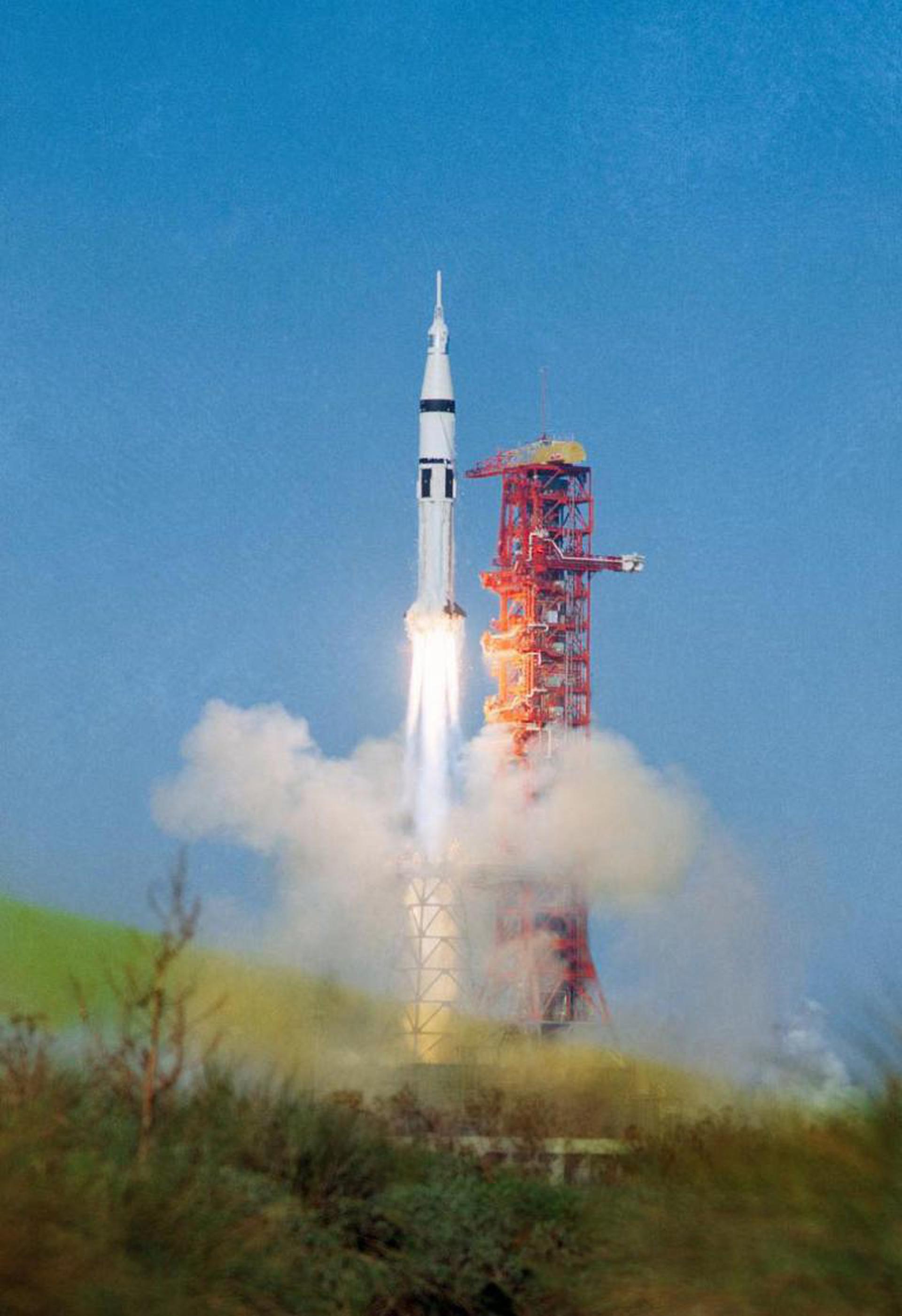Pete Conrad
American - (NASA)
Deceased
Date of Birth: June 2, 1930
Date of Death: June 8, 1999
Charles "Pete" Conrad Jr. was an American NASA astronaut, aeronautical engineer, naval officer and aviator, test pilot, and during the Apollo 12 mission became the third man to walk on the Moon. Conrad was selected in NASA's second astronaut class.
Titan II GLV | Gemini V
National Aeronautics and Space Administration | United States of AmericaCape Canaveral SFS, FL, USA
Aug. 21, 1965, 2 p.m.
Status: Success
Mission:
Gemini 5 was the third crewed mission of the NASA's Project Gemini. The mission was commanded by Command Pilot L. Gordon Cooper, Jr. and Pilot Charles "Pete" Conrad, Jr. The mission began on August 21, 1965, 13:59:59 UTC and ended on August 29, 1965, 12:55:13 UTC.
Low Earth OrbitTitan II GLV | Gemini XI
National Aeronautics and Space Administration | United States of AmericaCape Canaveral SFS, FL, USA
Sept. 12, 1966, 2:42 p.m.
Status: Success
Mission:
Gemini 11 was the ninth crewed mission of the NASA's Project Gemini. It was commanded by Command Pilot Charles "Pete" Conrad, Jr. and Pulot Richard F. Gordon, Jr. The crew performed a direct-ascent rendezvous with the Agena Target Vehicle on the first orbit and used the Agena rocket engine to put the combined craft in a higher orbit. Astronauts also performed two EVAs and conducted various scientific experiments. The mission started on September 12, 1966, 14:42:26 UTC and, having performed the first totally automatic, computer-controlled reentry, it ended on September 15, 1966, 13:59:35 UTC.
Low Earth OrbitSaturn V | Apollo 12
National Aeronautics and Space Administration | United States of AmericaKennedy Space Center, FL, USA
Nov. 14, 1969, 4:22 p.m.
Status: Success
Mission:
Apollo 12 was the second manned mission to the surface of the moon. The commander of the mission was Charles Conrad, Jr. , the Command Module Pilot was Richard Gordon, Jr. , and the Lunar Module Pilot was Alan Bean. The mission was launched on November 14th, 1969 and the Capsule safely splashed down in the ocean on November 24th, 1969
Lunar OrbitApollo LM | Apollo 12
Northrop Grumman Space Systems | United States of AmericaOceanus Procellarum, Moon
Nov. 20, 1969, 2:25 p.m.
Saturn IB | Skylab 2
National Aeronautics and Space Administration | United States of AmericaKennedy Space Center, FL, USA
May 25, 1973, 1 p.m.
Status: Success
Mission:
Skylab 2 (also known as SL-2 or SLM-1) was the first crewed mission to the first US orbital space station Skylab. The mission began on May 25, 1973, 13:00:00 UTC with the launch of a three-person crew. Crew members were the Commander Charles "Pete" Conrad, Jr., Science Pilot Joseph P. Kerwin and Pilot Paul J. Weitz. During their 26-day stay on the station, crew performed station repairs and conducted scientific, medical experiments, gathered solar and Earth science data. The mission ended successfully with the splashdown in the Pacific Ocean on June 22, 1973, 13:49:48 UTC.
Low Earth OrbitThe National Aeronautics and Space Administration is an independent agency of the executive branch of the United States federal government responsible for the civilian space program, as well as aeronautics and aerospace research. NASA have many launch facilities but most are inactive. The most commonly used pad will be LC-39B at Kennedy Space Center in Florida.
Ariane 62
Galileo L14 (FOC FM33 & FM34)
Ariane Launch Area 4 - Guiana Space Centre, French GuianaPayload consists of two satellites for Europe's Galileo navigation system.
Atlas V 551
Amazon Leo (LA-04)
Space Launch Complex 41 - Cape Canaveral SFS, FL, USAAmazon Leo, formerly known as Project Kuiper, is a mega constellation of satellites in Low Earth Orbit that will offer broadband internet access, thi…
Long March 4B
Ziyuan-3-04
Launch Complex 9 - Taiyuan Satellite Launch Center, People's Republic of ChinaThe ZY-3 (Ziyuan-3, 'Resource-3') series represents China's first high-resolution, stereoscopic mapping satellites for civilian use. The second sa…
Falcon 9
Starlink Group 6-82
Space Launch Complex 40 - Cape Canaveral SFS, FL, USAA batch of 29 satellites for the Starlink mega-constellation - SpaceX's project for space-based Internet communication system.
Falcon 9
Starlink Group 15-12
Space Launch Complex 4E - Vandenberg SFB, CA, USAA batch of 27 satellites for the Starlink mega-constellation - SpaceX's project for space-based Internet communication system.
